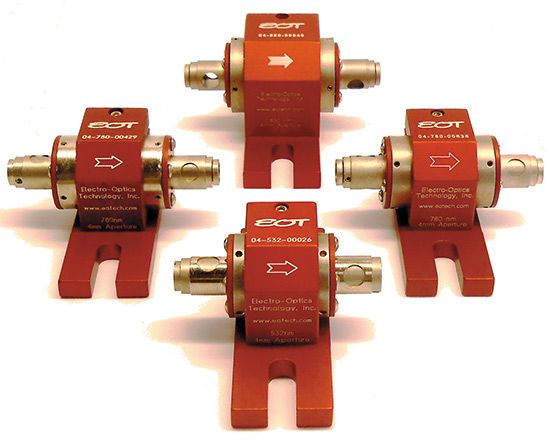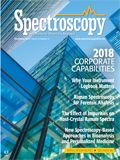Electro-Optics Technology, Inc.
Company Description
Electro-Optics Technology, Inc. has been supplying enabling components and diagnostic equipment worldwide for manufacturers and users of high power laser systems since 1987. Current products include: Faraday rotators, optical isolators, and fiber collimators for use with laser diodes, fiber lasers, and solid-state lasers. EOT also stocks a complete line of high speed photodetectors used to monitor the output of pulsed, mode-locked, and externally modulated CW lasers.

Chief Spectroscopic Techniques Supported
- Raman spectroscopy
- Sequencing
- Imaging
Markets Served
- Life sciences
- Biotechnology
- Medical
- Materials Science
- Research & Development
Major Products/Services
- Faraday Rotators
- Optical Isolators
- Photodetectors
Facility
EOT recently moved to a brand new, 40,000 sq. ft. manufacturing facility located in Traverse City, Michigan, which includes a 15,000 sq. ft. state-of-the-art cleanroom and on-site machine shop.
Electro-Optics Technology, Inc.
3340 Parkland Ct.
Traverse City, MI 49686
TELEPHONE
(231) 935-4044
E-MAILsales@eotech.com
WEB SITEwww.eotech.com
NUMBER OF EMPLOYEES
85
YEAR FOUNDED
1987

LIBS Illuminates the Hidden Health Risks of Indoor Welding and Soldering
April 23rd 2025A new dual-spectroscopy approach reveals real-time pollution threats in indoor workspaces. Chinese researchers have pioneered the use of laser-induced breakdown spectroscopy (LIBS) and aerosol mass spectrometry to uncover and monitor harmful heavy metal and dust emissions from soldering and welding in real-time. These complementary tools offer a fast, accurate means to evaluate air quality threats in industrial and indoor environments—where people spend most of their time.
NIR Spectroscopy Explored as Sustainable Approach to Detecting Bovine Mastitis
April 23rd 2025A new study published in Applied Food Research demonstrates that near-infrared spectroscopy (NIRS) can effectively detect subclinical bovine mastitis in milk, offering a fast, non-invasive method to guide targeted antibiotic treatment and support sustainable dairy practices.
Smarter Sensors, Cleaner Earth Using AI and IoT for Pollution Monitoring
April 22nd 2025A global research team has detailed how smart sensors, artificial intelligence (AI), machine learning, and Internet of Things (IoT) technologies are transforming the detection and management of environmental pollutants. Their comprehensive review highlights how spectroscopy and sensor networks are now key tools in real-time pollution tracking.